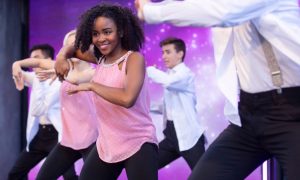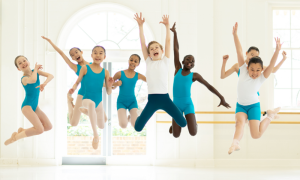Being a dance teacher is one of the most rewarding jobs in the world, but I might be a little biased as I am one. There’s nothing more rewarding than seeing a student improve, grow and reach his or her full potential in your class.
But what about the teachers? We place so much emphasis on the students’ conditioning, care and injury prevention, yet we have a tendency to forget about ourselves.
Long gone are the days where the teacher just sat in a chair with a cane and explained what the students had to do. We teach a lot more visually and practically these days. The teacher generally shows the wrong way and the right way to do steps and movements and goes to the extremes so students can see and understand the differences. This can put teachers at risk, especially when they may not be as fit and limber as they used to be.
Being a dance teacher, and especially a studio owner can be very stressful. You need to wear so many hats and manage many facets of a business from customer service, complaints, marketing and finances to general administration. Then add an annual recital to the mix, and maybe a summer school and competition, and let’s face it – we are stressed! So we don’t need to add injury to our lives.
What can dance teachers do to reduce the risk of injury? Let’s start by looking at what some of what the most common dance injuries are
• Muscle strain
• Joint sprain
• Bruising
• Muscle soreness
• Fractures
Understanding what these injuries are and what causes them can help identify problems early, as most teachers do with their students. But what about yourself? Let’s look at what can cause these injuries during the many hours of instructing and choreographing that each teacher does.
Excessive range: This applies to movement that forces a joint or body part beyond a safe range. For example, hyper flexion at the neck or over-arching the back.
Excessive load: Movement that places excessive weight on or through a joint or muscle. For example, knees bending below 90º when landing or straight leg sit-ups.
Ballistic: Repetitive dynamic movement that stretches muscle tissue beyond the normal range. This sort of movement is often explosive and uncontrolled. For example, bouncing (of knees, spine), overly repetitive kicks, leaps, head isolations and arm flings.
Sustained: The holding of a position that places excessive stress on a muscle group or joint. For example, a coccyx sit or balance on one leg for a long period of time.
Repetitive: Too much repetition can be dangerous. Even safe movements performed too many times can cause injury. For example, jumps, push-ups and lifts.
In my opinion, when you’re teaching for four hours in a row or more, you can’t avoid some of the above movement types, but it’s important to be aware of them and to think about how much we demonstrate a movement if we feel strain, pain or any warning sign. Injury and stress are always going to be in our lives, it’s the nature of the dance business, but here are some tips to help you reduce them:
- Remember occupational health and safety rules.
- Get a regular remedial sports massage or visit a physical therapist.
- If you have injured yourself, but still have to teach, use an assistant teacher or senior student for demonstrating until you have fully recovered.
- Keep up regular classes for technique and strength. We can get so busy, but we too must be in class regularly. I have heard of large dance studios holding a teachers’ class once a fortnight and rotating who from the staff takes the class. This helps the teaching staff to keep up their technique and fitness.
- Keep hydrated and eat a well balanced diet.
- Make sure to get plenty of sleep. You need energy to energize your students and a rested mind to be creative.
- If you are teaching for long period of time pace yourself and take regular breaks if you can.
At the end of the day, teachers need to remember to take care of themselves. We inspire and nurture talents, yet we sometimes forget to inspire and nurture ourselves. Start to look after yourself so you can continue to give to your students for years to come. Being a great dance teacher is just as important as being a great dancer.
Source: www.curriculumsupport.education.nsw.gov.au/primary/pdhpe/dance/dan004.htm
Photo: © Viorel Sima | Dreamstime.com
Published by Dance Informa digital dance magazine – dance news, dance auditions & dance events for the professional dancer, dance teacher and dance students.















